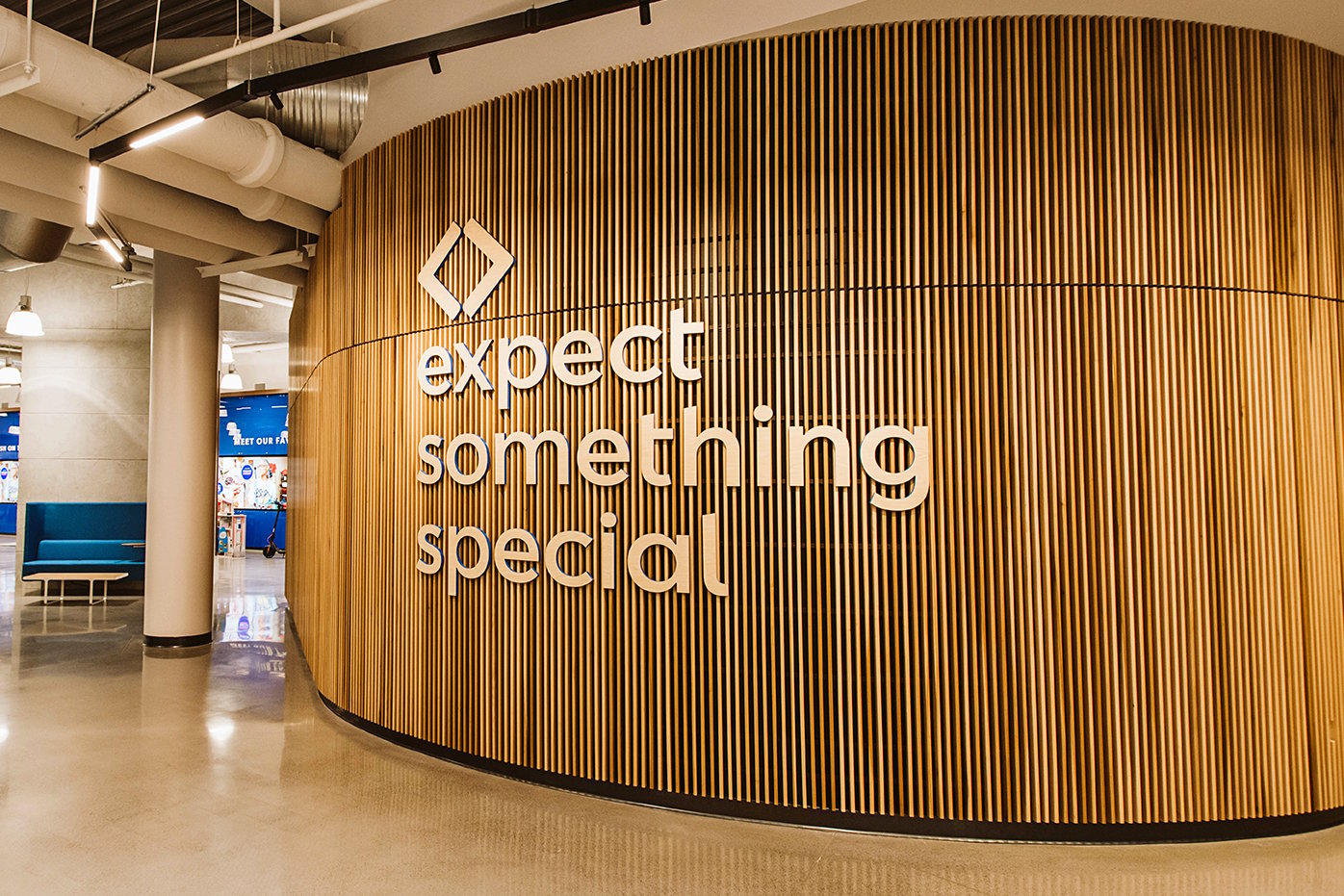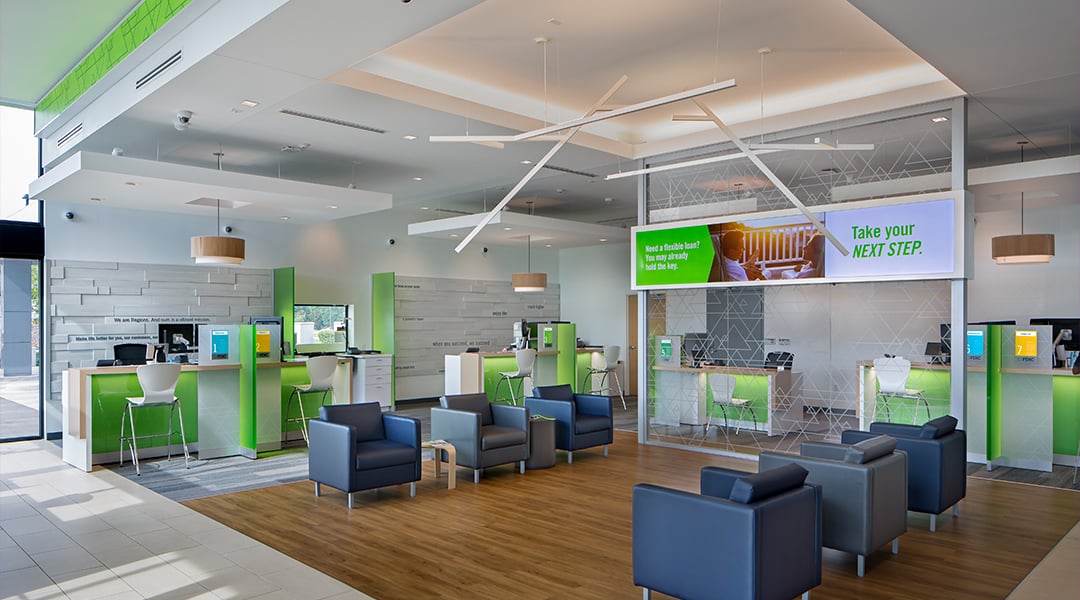Better environmental design starts with better thinking
When done right, environmental design guides an end-to-end process that elevates a brand by creating a great customer experience.
It intertwines creativity with practicality, which ensures innovative designs also meet operational needs and business objectives.
So, let’s consider how great environmental design seamlessly flows from brand expression to brand execution at scale.
Brand expression: Elevating branding and customer experience
Achieving a harmonious blend of creativity and practicality requires a thoughtful design approach that considers the brand identity, customer experience, associate choreography and operational efficiency.
A good partner will always start by listening and asking the right questions:
- What do you want and why?
- What are the pain points you want to solve?
- What do your customers like and dislike?
- How about your associates?
- What does the data say? And should we collect more?
- What’s the timeline? And budget?
Some clients want a refresh. Some a reinvention. Some bring their own designs but are concerned about execution issues. Some are overwhelmed by design adaptation at scale, arriving at meetings with a wide variety of store footprints burdened with inconsistent branding and merchandising over many regions and locations.
 Sam's Club; A reimagined corporate headquarters experience targeting suppliers, buyers, merchants, associates and their guests.
Sam's Club; A reimagined corporate headquarters experience targeting suppliers, buyers, merchants, associates and their guests.
Environmental design requires a thorough understanding of the assignment. The design team, armed with diverse expertise, then identifies opportunities to elevate the brand presence throughout the customer journey. They will optimize the layout and wayfinding, increasing engagement while also reducing friction. This includes a strategic digital integration that enables mobile, website and pricing platforms that delight customers and build loyalty.
"Some clients want a refresh. Some a reinvention. Some bring their own designs but are concerned about execution issues."
Further, the integration of creativity and practicality almost always includes an eye toward flexible, adaptable design and layout. This approach incorporates modular design elements for changing merchandise assortments, seasonal promotions and evolving customer preferences.
Brand execution: A playbook for rollout and site-to-site adaptation
Designers with informed expertise lean into their downstream understanding of a project’s next steps, which include the supply chain, production, program management and installation. Why? A design can be spectacular and interesting and high-tech on paper — or even as a one-off flagship — but if it’s not efficiently scalable for the client, it’s going to fail. It will logjam the project with delays, finger pointing and lose-lose compromises.

Regions; Value engineering and program management that realized 50% savings on future installations. Without sacrificing quality or functionality.
Therein lies the strength of an end-to-end, no-handoff approach. Even with a back-and-forth collaborative process, it seamlessly flows from research and surveys to design to prototype to pilot to rollout. At each step in the design development process, value engineering takes place, ensuring that costs are kept down while quality is maintained or augmented.
Effective environmental design delivers solutions that can be executed at scale, meeting speed, timing and pricing requirements.
And when there are hiccups — supply chain panic! Material pricing upticks! — dedicated project management teams use their expertise and state-of-the-art logistics technology to clearly communicate issues. And then solve them.
"Effective environmental design delivers solutions that can be executed at scale, meeting speed, timing and pricing requirements."
All the front-end work pays off during execution. Those detailed surveys inform design and then prototyping for diverse footprints and floorplans. Fixture and graphics packages are not just produced and procured. They also are precisely kit packed so the right hardware, signage and décor arrive at each location, and they are loaded and organized onto trucks in optimal ways to facilitate the work of dedicated installation teams.
The end-to-end goal is to execute the rollout installations as efficiently as possible with no “go backs.” But good project management only ends with 100% client satisfaction, so any requested follow-up should be a quick, frictionless process that’s made clear even before rollout.
Reaching 100% client satisfaction requires better thinking during every step of the process, developing great branded environments.
Great design thinking combines innovation and practicality by anticipating the challenges of the design development and execution process. Great execution thinking combines efficiency and design intent to ensure the scaled rollout reaches — or surpasses — the client’s aspirational hopes and goals.